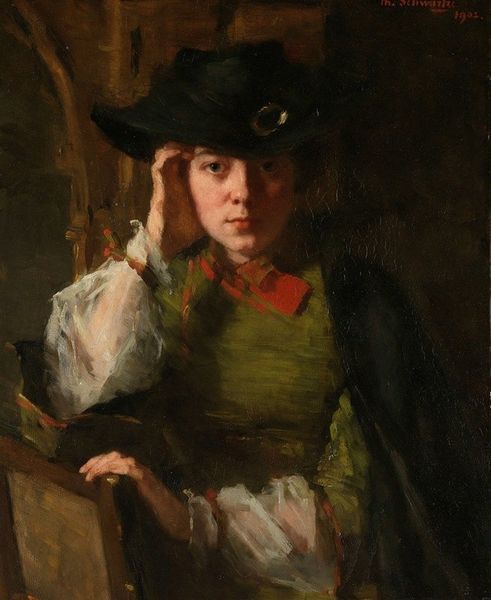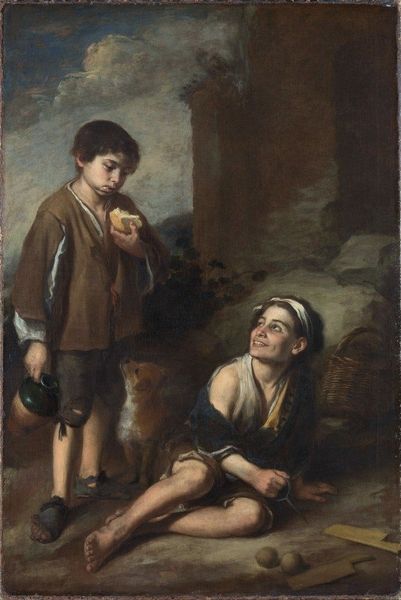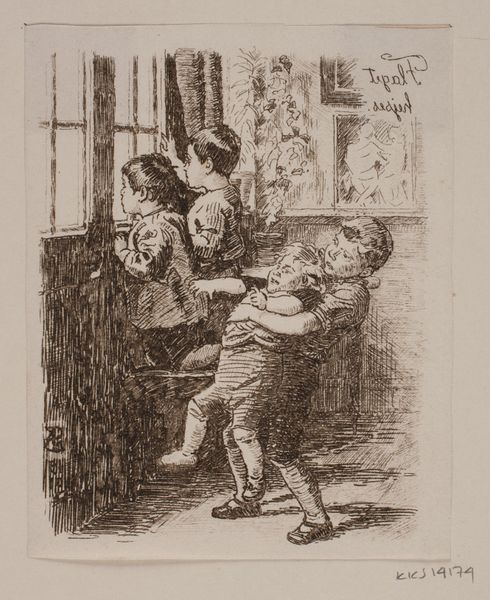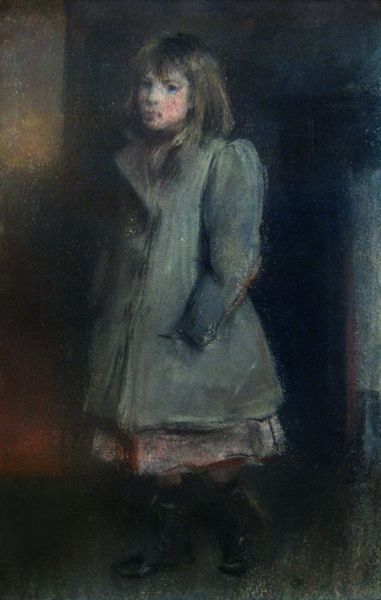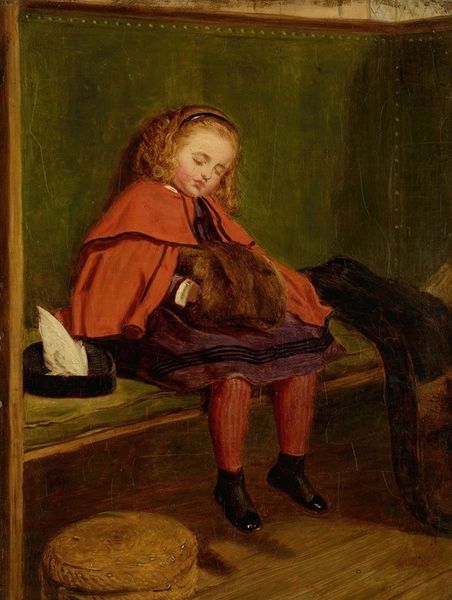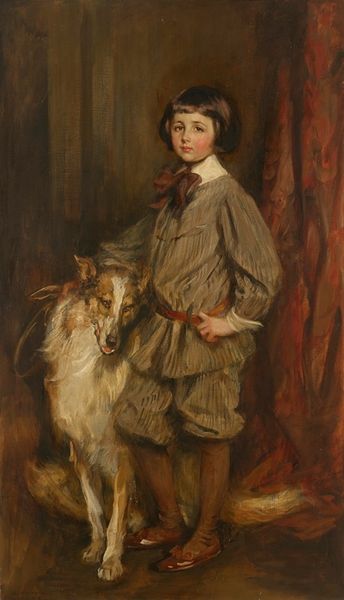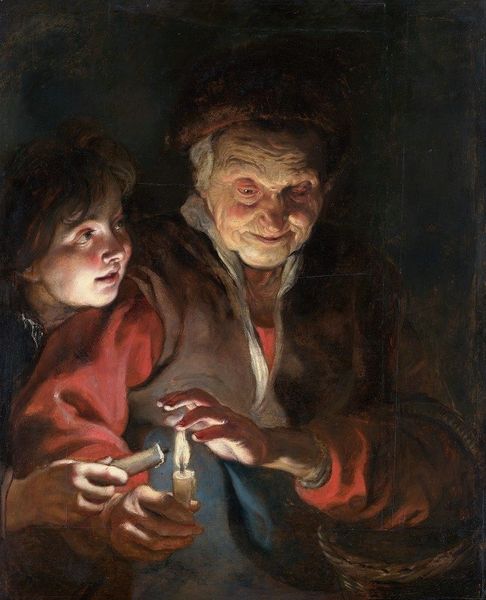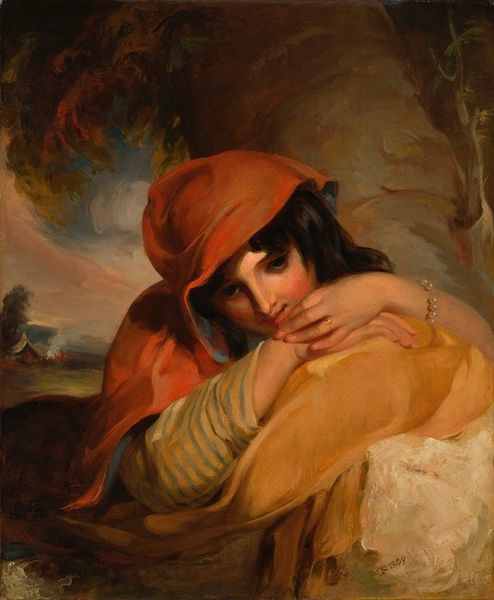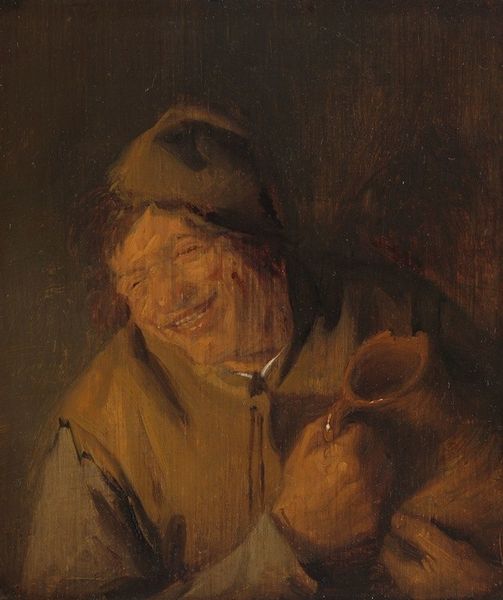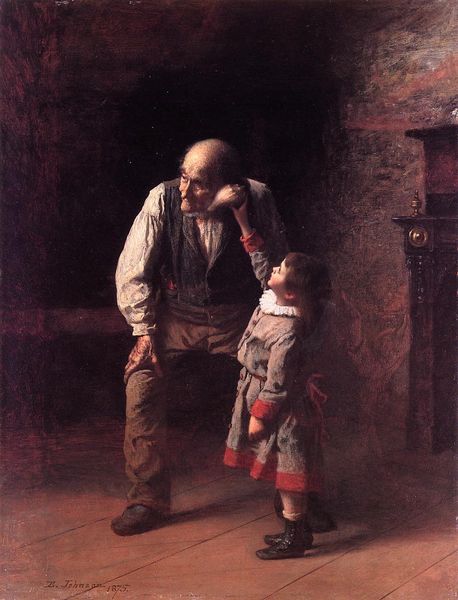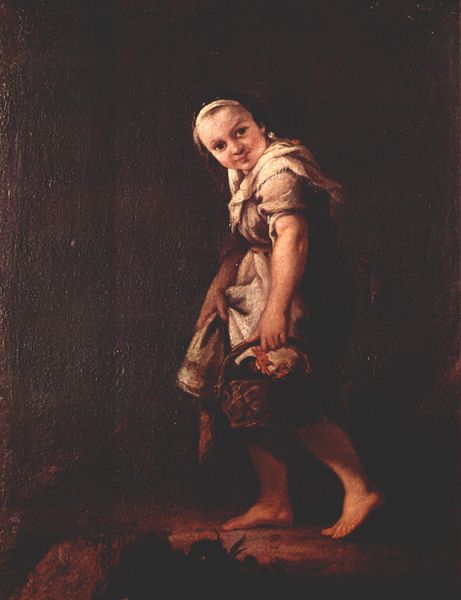
oil-paint, impasto
#
portrait
#
oil-paint
#
oil painting
#
impasto
#
group-portraits
#
ashcan-school
#
genre-painting
Copyright: Public domain
Editor: Here we have George Luks’ “In the Corner,” painted in 1921, with oils on canvas. The scene has an anecdotal, candid quality. There is a sense of whispered secret being exchanged between these two figures, and my eye is immediately drawn to the vibrant, contrasting colors of the figures against the somber backdrop. What do you see in this piece? Curator: I am struck by the strategic deployment of light and shadow to direct the viewer’s gaze. Notice how Luks uses the darker tones to frame the subjects, enhancing the luminous quality of their faces. This, coupled with the impasto technique, lends a tactile dimensionality that underscores the overall expressiveness of the composition. What structural relationships can we deduce between the figures, by carefully analyzing the lines, shapes, and compositional balance? Editor: That’s interesting! So you see the contrast more as a structural element? The dark colors in the background frame them, pushing them forward... And the shapes are like large blocks of color, broken by small areas of detail on the face of the kid in the front and on the child whispering to him. Curator: Precisely. Furthermore, we could read the application of paint itself as a critical element. The materiality speaks volumes about the artist’s intentions, no? Editor: Absolutely. I hadn't considered it that way at first, focusing more on what's represented. But the composition and the impasto technique are crucial elements in understanding the artwork. Curator: Indeed. It is a stimulating case study in the effective use of formal elements. Editor: I will remember to investigate those elements going forward!
Comments
No comments
Be the first to comment and join the conversation on the ultimate creative platform.

